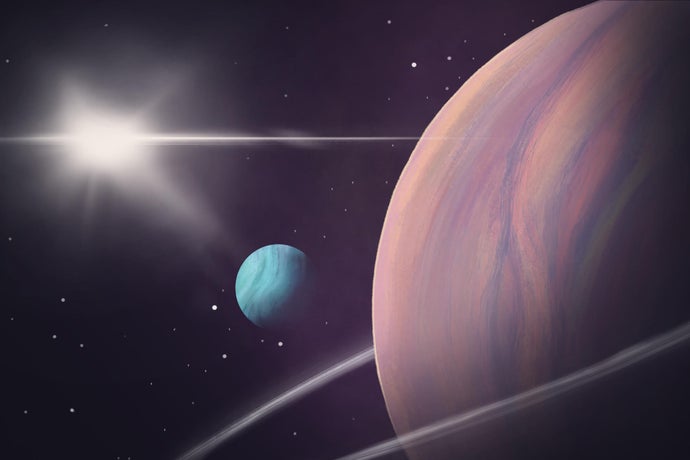Astronomers Have Found Another Possible ‘Exomoon’ beyond Our Solar System
Astronomers say they have found a second plausible candidate for a moon beyond our solar system, an exomoon, orbiting a world nearly 6,000 light-years from Earth. Called Kepler-1708 b-i, the moon appears to be a gas-dominated object, slightly smaller than Neptune, orbiting a Jupiter-sized planet around a sunlike star—an unusual but not wholly unprecedented planet-moon configuration. The findings appear in Nature Astronomy. Confirming or refuting the result may not be immediately possible, but given the expected abundance of moons in our galaxy and beyond, it could further herald the tentative beginnings of an exciting new era of extrasolar astronomy—one focused not on alien planets but on the natural satellites that orbit them and the possibilities of life therein.
天文学家表示,他们已经发现了太阳系以外的第二个貌似合理的候选卫星——即系外卫星——围绕着距离地球近6000光年的一个世界运行。 这个卫星被称为Kepler-1708 b-i,似乎是一个以气体为主的天体,比海王星略小,在一颗木星大小的行星周并与其一起绕着一颗类似太阳的恒星运行——这是一种不寻常的但并非完全没有先例的行星-卫星配置。这些发现出现在Nature Astronomy上。证实或反驳这一结果可能不是立即就能做到的,但是考虑到我们银河系和其他地方预计会有大量的卫星,它可能进一步预示着一个令人兴奋的太阳系外天文学新时代的初步开始——重点不是地外行星,而是围绕它们运行的自然卫星以及其中存在生命的可能性。
There are more than 200 moons in our solar system, and they have an impressive array of variation. Saturn’s moon Titan possesses a thick atmosphere and frigid hydrocarbon seas on its surface, possibly an analogue of early Earth. Icy moons such as Jupiter’s Europa are frozen balls that hide subsurface oceans, and they may be prime habitats for life to arise. Others still, such as our own moon, are apparently barren wastelands but could have water ice in their shadowed craters and mazelike networks of tunnels running underground. An important shared trait among these worlds, however, is their mere existence: six of the eight major planets of our solar system have moons. Logic would suggest the same should be true elsewhere. “Moons are common,” says Jessie Christiansen of the California Institute of Technology. “In our solar system, almost everything has a moon. I am very confident that moons are everywhere in the galaxy.”
在我们的太阳系中有200多颗卫星,它们的不同令人印象深刻。土星的卫星泰坦拥有厚厚的大气层,其表面有寒冷的碳氢化合物海洋,可能类似早期的地球。冰冷的卫星,如木星的欧罗巴,是隐藏着地下海洋的冰球,它们可能是出现生命的主要地区。还有一些卫星,比如我们自己的卫星,表面上是不毛之地,但在其阴影下的火山口和地下的迷宫般的隧道网络中可能有水冰。然而,这些世界的一个重要的共同特征是它们存在:我们太阳系的八大行星中有六大行星有卫星。从逻辑上看,其他地方也应该如此。”卫星很常见。”加州理工学院的Jessie Christiansen说,”在我们的太阳系中,几乎所有东西都有一个卫星。我非常确信,卫星在银河系中无处不在。”
Read more at Scientific American
在 Scientific American上了解更多











